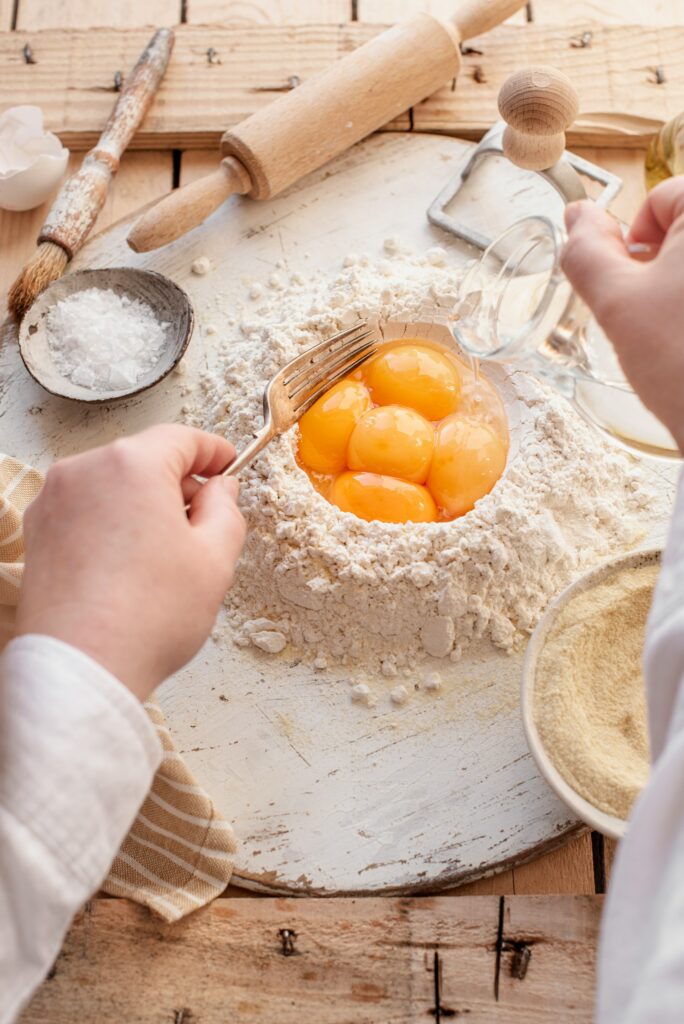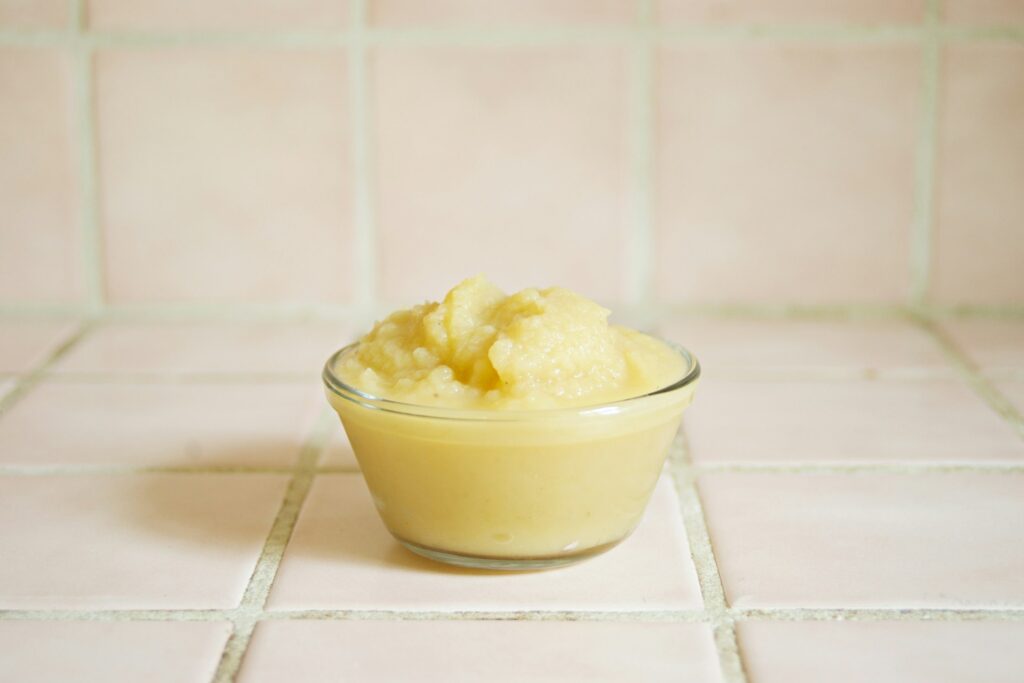Simple Swaps That Make Everyday Meals More Nutritious
Eating healthier doesn’t mean giving up your favorite foods—it often comes down to making smarter ingredient choices. With just a few simple swaps, you can lower calories, reduce added sugar, cut unhealthy fats, and increase the nutritional value of your meals without sacrificing flavor.
This list of easy substitutions is designed to help you make healthier choices in your everyday cooking. Whether you’re baking, sautéing, or meal prepping for the week, these tips will help you feel better about what’s on your plate.
And if you’re looking to fully stock your kitchen for healthier cooking, check out our list of the best healthy cooking tools and best pantry staples to keep on hand.
20 Healthy Recipe Substitutions That Actually Work
1. Swap Sour Cream with Greek Yogurt
Plain Greek yogurt offers the same creamy texture as sour cream but with more protein and less fat. It works perfectly in dips, dressings, and even baked potatoes. This simple swap boosts nutritional value without changing flavor too much. Choose full-fat or low-fat versions depending on your dietary goals.
2. Use Mashed Banana Instead of Sugar in Baking
Mashed banana is naturally sweet and adds moisture to baked goods like muffins and pancakes. Replacing sugar with banana cuts down on empty calories and adds fiber, potassium, and vitamins. You may need to adjust other liquids in the recipe slightly, but the result is both healthy and tasty.

3. Choose Whole-Wheat Flour Over White Flour
Whole-wheat flour contains more fiber and nutrients than refined white flour, making it a better choice for breads, pancakes, and even cookies. The texture may be denser, but the flavor is rich and satisfying. Start by substituting half the amount in a recipe until you adjust to the difference.
4. Replace Cream with Unsweetened Coconut Milk
If you’re trying to reduce dairy or saturated fat, unsweetened coconut milk is a versatile substitute. It provides a creamy texture in soups, curries, and sauces while adding a hint of flavor. Be sure to use the canned version for richness, not the beverage version.
5. Use Zoodles Instead of Pasta
Zucchini noodles (zoodles) are a low-carb alternative to traditional pasta. They’re easy to make with a spiralizer and can be eaten raw or lightly sautéed. Zoodles absorb sauces well and are perfect for lightening up heavier dishes without losing volume.
6. Choose Avocado in Place of Butter on Toast
Spread mashed avocado on toast instead of butter or margarine for a heart-healthy fat boost. Avocados provide fiber, potassium, and monounsaturated fats, making them a more nutritious and satisfying option. Add a sprinkle of sea salt or red pepper flakes for extra flavor.

7. Use Applesauce Instead of Oil in Baked Goods
Unsweetened applesauce adds moisture to baked goods without the fat of oil. It works especially well in muffins, quick breads, and cakes. This swap not only reduces calories but also adds natural sweetness and fiber.
8. Replace Salt with Herbs and Spices
Cutting back on sodium doesn’t mean sacrificing flavor. Use herbs like rosemary, basil, or cilantro, and spices like cumin, turmeric, or paprika to enhance your meals. These alternatives add depth, aroma, and health benefits without increasing your salt intake.
9. Substitute Lettuce Wraps for Bread or Tortillas
For a low-carb or gluten-free option, wrap sandwiches or tacos in large lettuce leaves instead of bread or tortillas. Romaine, butter lettuce, and collard greens work best. These leafy wraps add crunch, hydration, and a fresh twist to your meal.
10. Choose Nut Butters Over Processed Spreads
Skip sugar-laden spreads and opt for natural nut butters like almond or peanut butter with no added sugar or hydrogenated oils. They’re packed with healthy fats, protein, and flavor. Use them on toast, in smoothies, or as a dip for fruit and veggies.
11. Swap Croutons for Roasted Chickpeas in Salads
Roasted chickpeas provide crunch and protein without the refined carbs and fats found in most store-bought croutons. They’re easy to make at home with a little olive oil and seasoning. Add them to salads, soups, or grain bowls for texture and nutrition.
12. Use Brown Rice Instead of White Rice
Brown rice retains its outer layer, making it higher in fiber, vitamins, and minerals than white rice. It has a slightly nutty flavor and chewier texture, which pairs well with a variety of dishes. Try using it in stir-fries, burrito bowls, or side dishes.
13. Try Cauliflower Rice in Place of Regular Rice
Cauliflower rice is a low-calorie, low-carb alternative to rice made by pulsing cauliflower florets in a food processor. It’s quick to cook and absorbs the flavors of your dish. Use it as a base for curries, stir-fries, or burrito bowls to reduce calories while increasing vegetable intake.

14. Pick Popcorn Over Chips for a Snack
Air-popped popcorn is a whole grain snack that’s low in calories and high in fiber. Skip the butter and season it with spices, nutritional yeast, or a pinch of sea salt. It satisfies crunch cravings without the excess fat and sodium found in most chips.
15. Use Ground Turkey Instead of Ground Beef
Ground turkey is typically leaner and lower in saturated fat than ground beef. It’s a great substitute in dishes like tacos, meatballs, and casseroles. Look for lean or extra-lean varieties, and season well to keep the flavor bold and satisfying.
16. Swap Soda for Sparkling Water
Ditch sugary sodas for flavored sparkling water. It offers the same bubbly satisfaction without the empty calories and added sugars. If you’re craving sweetness, add a splash of 100% juice or infuse with fresh fruit.
17. Use Cottage Cheese in Place of Ricotta or Cream Cheese
Cottage cheese is lower in fat and calories than ricotta or cream cheese but still offers creaminess and protein. Blend it smooth for use in dips, spreads, or stuffed shells. It’s also a good post-workout snack when paired with fruit or whole grains.
18. Choose Spaghetti Squash Instead of Spaghetti
Once cooked, spaghetti squash naturally separates into strands that resemble pasta. It’s low in carbs and high in nutrients like vitamin C and fiber. Use it as a base for marinara, pesto, or any sauce you’d normally serve with spaghetti.
19. Replace Ice Cream with Frozen Yogurt or Banana “Nice Cream”
Frozen banana blended until creamy makes a satisfying dessert that mimics the texture of ice cream. You can mix in cocoa, vanilla, or nut butter for variety. It’s a fun way to indulge your sweet tooth while keeping ingredients simple and healthy.
20. Substitute Eggs with Flaxseed in Baking
If you’re looking to reduce cholesterol or bake vegan, ground flaxseed mixed with water is a great egg replacement. One tablespoon of flaxseed plus three tablespoons of water equals one egg. It adds fiber and omega-3s to your baked goods.
Frequently Asked Questions About Recipe Substitutions
Can I make healthy substitutions without changing the taste?
Yes! Many swaps offer a similar texture and flavor while improving the nutrition of a dish. Start small and experiment to find what works best for your tastes.
Will healthy substitutions affect my recipe’s outcome?
Some swaps can slightly alter texture or moisture levels. It’s helpful to test new combinations and adjust quantities as needed. Baking is more sensitive than cooking, so proceed gradually.
Do I need special tools to make substitutions like cauliflower rice or zoodles?
A food processor or spiralizer helps but isn’t required. Many grocery stores now carry pre-riced cauliflower and pre-cut veggie noodles for convenience.
Are healthy swaps more expensive?
Not necessarily. Many substitutes like brown rice, beans, or whole-wheat flour are cost-effective, especially when bought in bulk. Making things from scratch can also help reduce costs.
Editor’s Notes on Healthy Recipe Swaps
This guide is meant to show that eating better doesn’t have to mean giving up the foods you love. With just a few strategic swaps, anyone can turn traditional recipes into nourishing meals. The goal is progress, not perfection—each small change adds up over time.
You can find many of the items mentioned in this list in our guides to the best healthy grocery staples and top clean eating pantry essentials.
Small Changes, Big Benefits
Healthy eating starts in your kitchen. By using these easy substitutions, you can cut down on processed ingredients, lower calorie intake, and improve the nutritional value of your meals. And the best part? You don’t have to give up taste or enjoyment to do it.
Over time, these small changes can lead to big results—not just in how you look, but in how you feel. Stick with it, stay curious in the kitchen, and continue experimenting with new ways to nourish your body.


